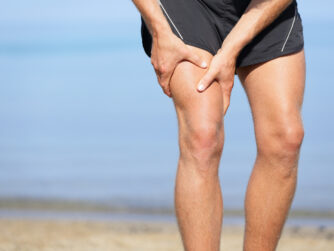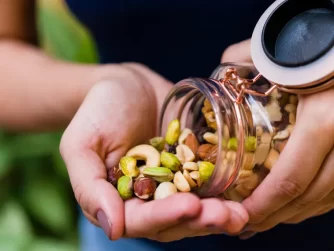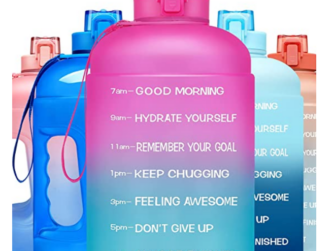If you’ve ever asked yourself, “How do I get rid of this belly fat?”—you’re definitely not alone. It’s one of the most common questions I hear from clients, and not just because of how it looks. Belly fat, especially visceral fat, isn’t just hanging out under your skin—it wraps around your organs. That’s the kind of fat that increases your risk of heart disease, diabetes, stroke, and even certain cancers.
So no, you’re not being vain by wanting to lose it. You’re being smart. And in this blog, we’re going to break down exactly how to tackle belly fat with real-world strategies that work.
First, the Truth About Spot Reduction
Let’s clear this up right away: you can’t spot-reduce fat. Doing 100 crunches a day won’t shrink your waist if your nutrition and overall lifestyle habits aren’t in check.
Fat loss happens systemically—you can’t choose where your body burns it from first. But by creating the right environment through diet, movement, and stress management, you can start reducing your overall fat and see that belly begin to flatten.
The Role of Nutrition in Belly Fat Loss
You’ve heard the saying, “Abs are made in the kitchen,” right? There’s a reason for that.
If you want to lose belly fat, nutrition is where you start. Here’s what to focus on:
1. Cut the sugar and refined carbs
This is huge. Sugary drinks, processed snacks, and white breads spike your insulin and increase belly fat storage. Studies consistently show a link between sugar-sweetened beverages and increased abdominal fat (1).
Swap: Replace soda with sparkling water and sugary cereal with high-protein oats or eggs.
2. Prioritize protein
Protein doesn’t just help build muscle—it keeps you full and helps you eat fewer calories without trying. Plus, higher-protein diets have been shown to reduce abdominal fat specifically (2).
Goal: Try to get 25–30 grams of protein per meal from sources like chicken, eggs, Greek yogurt, or legumes.
3. Watch your portions—but don’t starve
Too many people go extreme. Cutting too many calories too quickly can backfire, slowing your metabolism and increasing cravings.
Instead, focus on moderate, consistent meals with protein, fiber, and healthy fats to keep hunger in check and energy up.
4. Add fiber, especially soluble fiber
Fiber slows digestion, stabilizes blood sugar, and improves gut health. Soluble fiber in particular can help reduce belly fat (3).
Best sources: Oats, flaxseeds, avocados, legumes, and veggies like Brussels sprouts.
Your Habits Matter More Than You Think
What you eat matters—but how you live determines how long you keep that belly fat off.
5. Sleep like it’s your job
Poor sleep increases cortisol (your stress hormone) and leads to fat gain—especially around the midsection. Aim for 7–9 quality hours every night.
If you’re routinely skimping on sleep, your belly fat loss journey will be an uphill battle.
6. Move every day, not just at the gym
Yes, workouts help. But what you do outside of the gym—walking, stretching, standing—burns a ton of calories over time. It’s called NEAT (non-exercise activity thermogenesis) and it plays a big role in fat loss.
Pro tip: Aim for 7,000–10,000 steps a day as a baseline.
7. Strength training is key
Cardio is great, but building muscle through strength training is what really ramps up your metabolism and keeps fat off long-term.
You don’t need to train like a bodybuilder, but a couple full-body strength sessions each week can do wonders.
Let’s Talk Stress (Yes, It’s Related)
If you’re doing everything right and still can’t lose belly fat, stress might be the culprit.
Chronically high cortisol levels can cause your body to hold onto fat—especially in your midsection. Meditation, breathing exercises, journaling, or even just taking a walk in nature can help regulate your nervous system.
Personal tip: When I hit a stressful season and noticed my waistline creeping up, I wasn’t eating more—but I was sleeping less and carrying more tension. Once I addressed the stress, the scale started moving again.
What About Belly Fat “Quick Fixes”?
You’ll see a lot of products promising to melt belly fat—fat burners, waist trainers, detox teas. Here’s the deal:
- Most are short-term gimmicks
- They can waste your money
- And worst of all, they might distract you from doing what actually works: eating well, moving consistently, and taking care of your body long-term
If there were a true shortcut, everyone would be using it. The best strategy is still the slow, steady one that builds momentum over time.
A Word on Patience
Belly fat tends to be the last to go for a lot of people, especially for women and men over 40. That’s just biology. Hormonal changes, metabolism shifts, and years of lifestyle patterns all play a role.
But here’s the good news: you can absolutely change your body—and more importantly, how you feel in your skin.
It starts with consistent action, not perfection.
Final Thoughts: Real Results Come from Real Habits
Getting rid of belly fat isn’t about starving yourself, chasing trends, or hating your body into change. It’s about fueling yourself right, moving your body with purpose, and taking small daily actions that compound into big wins.
Every healthy meal, every walk, every workout—it all adds up.
And the next time you look in the mirror and feel discouraged, remind yourself: this is a process, not a punishment. You’re doing this for your energy, your confidence, your health.
You’ve got this.
Let’s Keep It Going…
What’s one habit you’re going to focus on this week to start flattening that belly—for good? Let me know in the comments or message me directly. Let’s work on it together.
References:
- Bray GA, Popkin BM. Dietary sugar and body weight: Have we reached a crisis in the epidemic of obesity and diabetes? Health Affairs, 2014.
- Pasiakos SM, et al. Protein supplements and muscle mass and function: a meta-analysis. Sports Med, 2015.
- Soliman GA. Dietary fiber, atherosclerosis, and cardiovascular disease. Nutrients, 2019.







